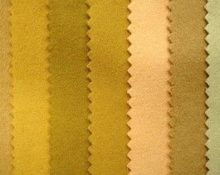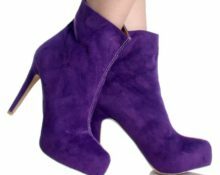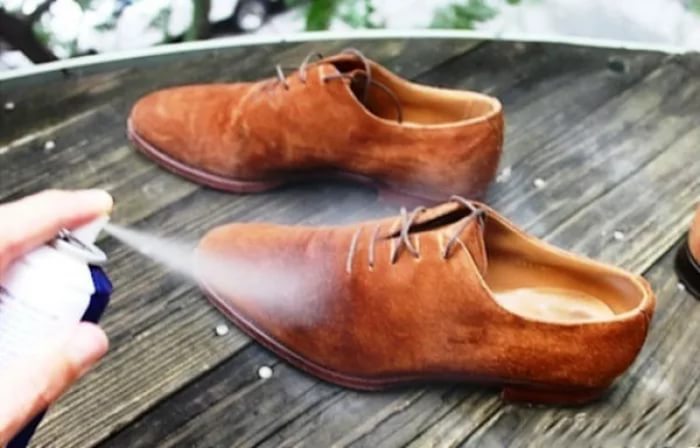Boots made of soft natural material such as suede or velor are recommended to be worn exclusively in dry weather. Soft and delicate material without the use of special water-repellent agents quickly gets wet, which is why shoes made from it are deformed and quickly become unusable.
Fashion trends of the current season have made these two materials extremely popular and in demand. However, not all consumers know that there is a significant difference between them, which primarily lies in the price of finished products.
Features of velor on boots
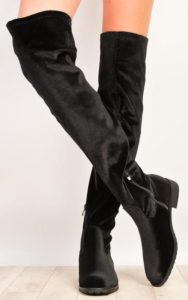
Velor is a fabric made from low-grade genuine leather (pork, goat or cow skins). The leather used for its production is very thin and its reverse side (bakhtarma) is used for processing, since it is impractical to take the front side with scratches and irregularities on it as a basis.
The treatment that pig or goat skin undergoes to turn it into a soft, smooth-haired material is called chrome tanning. It is based on polishing leather using chromium salts, which make the fabric more velvety and flexible.
Due to the fact that tanning using chromium salts did not impart water-repellent properties to the fabric, today it is increasingly being replaced with zirconium or titanium salts and silicone impregnations. These substances give the skin more hairiness, which is why it does not allow moisture to pass through. Such substances are much more expensive, so more expensive sheepskin coats, boots, designer bags and other accessories are made from velor treated with them.
Despite the fact that new tanning methods make velor more resistant to moisture and dirt, boots made from it still require careful daily cleaning with special brushes. For the same reason, the bright and rich color of velor ankle boots or over the knee boots often requires constant replenishment from shoe cream paints.
Velor has a number of significant advantages:
- low cost of finished products caused by low-cost production of materials;
- the possibility of using low-grade raw materials;
- paints well in bright colors;
- used for the production of small accessories;
- Lightweight and pleasant fabric.
Features of suede on boots
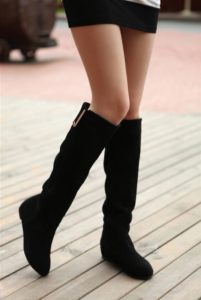
If velor is considered a low-grade material, then suede is classified as an elite material. For its production, deer skins are used, which costs several times more than pork skins. However, it is worth paying tribute to suede for the fact that, unlike velor, it is much more beautiful, softer and more wear-resistant.
Important! Natural suede boots will not get wet or become stiff after contact with moisture. They can be safely washed with water and mild detergents.
Suede fabric gets its moisture resistance thanks to a special processing method - fat tanning. Previously, exclusively fish oil was used for these purposes, which, according to the observations of craftsmen, gave animal skins softness and greater moisture resistance. The technology that has survived to this day has been significantly modernized and today, in addition to animal fats, vegetable oils are also used for fat tanning: flaxseed, olive, sunflower.
High-quality suede shoes are much more expensive than models made of smooth or even patent leather. This is explained by the fact that suede allows air to pass through well, providing natural ventilation to the foot. It is also worth noting the following positive features of suede fabric:
- strength;
- presence of pile on both sides;
- hygroscopicity;
- environmentally friendly production:
- good stretchability while maintaining the shape of the product;
- stability and preservation of external qualities after repeated cleaning with detergents;
- hypoallergenic;
- withstands sudden temperature changes.
Differences between velor and suede on boots
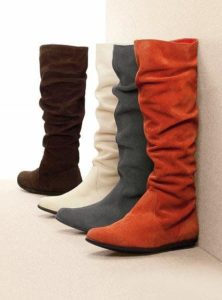
There are several significant differences between two fabrics with similar external characteristics used for sewing shoes and other products:
- Raw materials. Velor is cheap and affordable skins, suede is expensive, but at the same time higher quality materials;
- Water-repellent properties. Velor absorbs water well, which is why boots exposed to rain that have not been treated with a special spray can become completely unusable. Suede is a more durable material;
- Presence and height of pile.Velor has a pile on only one side, and it is low, while suede has a high pile on both sides;
- Care. Velor requires careful care, which involves the constant use of paints and sprays; suede is more unpretentious.
This is the difference between the two materials. Information like this will help you decide which boots are best for you.


 0
0
